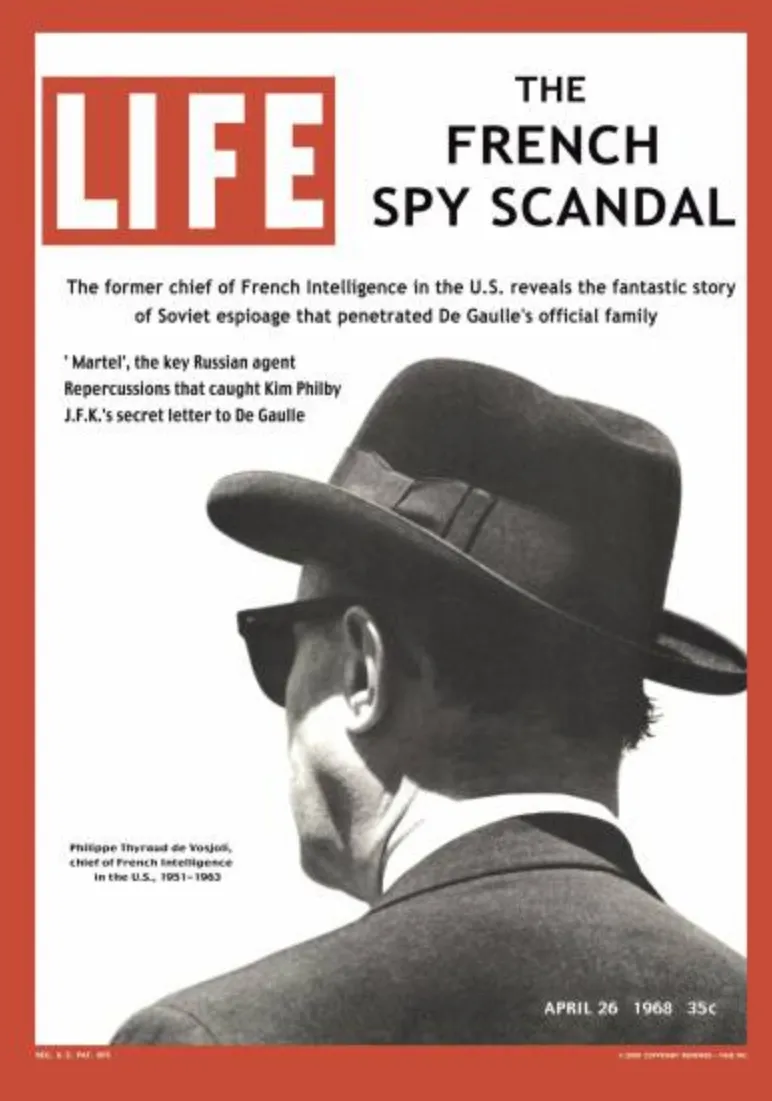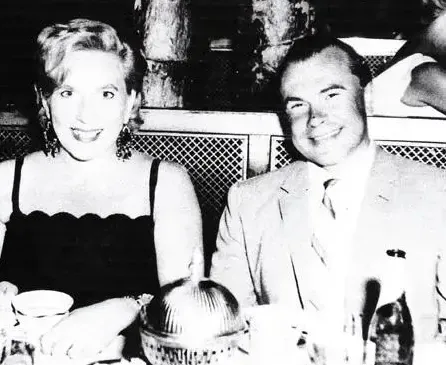France's Sapphire Spy Scandal & the JFK Letter That Lit the Fuse for Hitchcock's Topaz
A KGB defector to the US sent shockwaves of paranoia through NATO in the build-up to the Cuban Missile Crisis. But was ‘Martel’ a Soviet plant or top-flight source?
French spymaster Philippe Thyraud De Vosjoli dropped a bombshell in the ‘60s, claiming a Kremlin spy ring called 'Sapphire' had penetrated the heart of the French government. He warned of ‘sinister’ forces at work and claimed France was moving slowly to avoid a scandal.
De Vosjoli’s claims of Soviet espionage and French apathy triggered denials and counter-attacks. French officials described their intelligence officer of 20 years as 'comic' and a 'defector to the CIA’. De Vosjoli resigned under pressure but his accusations made for uncomfortable reading among NATO allies whose relations were strained in the months leading up to the October 1962 Cuban Missile Crisis.
De Vosjoli’s source? A high-ranking KGB defector to the CIA known by his French code name ‘Martel’. Remarkably, De Vosjoli - former chief of French intelligence in the US - made his allegations in a 1968 edition of Life magazine. It was six years after the intrigue strained US-French relations, upended NATO, and sent De Vosjoil’s career into a tailspin. The claims were so sensitive the CIA didn’t even release its copy of the Life article until 2004.
So why was everyone in such a panic?
.webp)
JFK Intervenes In the Spy Scandal
US President John F. Kennedy was so concerned he warned French President Charles de Gaulle personally about the KGB defector’s allegations - that Soviet spies were embedded at the highest levels of France’s cabinet, intelligence services, and military. JFK hand-wrote a letter in 1962 and had it delivered by a private courier. In it, he offered to provide France with whatever means or contacts they desired to verify the intel themselves, De Vosjoli said.
Some French and US officials were wary, believing the KGB officer might be a Soviet plant sent to stir up trouble, but ‘Martel’ had proven his bona fides by blowing the covers of Russian agents including British traitors Kim Philby and William Vassall, Swedish Colonel Stig Wennerstrom, Germany’s Heinz Felfe, and US Army Sgt Jack Dunlop who committed suicide when he was exposed as a $30,000-a-year Russian operative.
De Gaulle dispatched French General Jean-Louis du Temple de Rougemont to Washington with a team of experts to question the Russian defector. They were ‘astonished and depressed’ after the debriefings, De Vosjoli reported, but still reluctant to make a move. In the French spymaster’s view, “Kennedy's letter unnecessarily and unfairly impugned everyone in both services and created almost impossible tensions and suspicions everywhere.” The French could not be certain about the real source of the intelligence: Was it Martel talking, the KGB, or the CIA?
The situation and distrust fueled by Martel’s revelations led to speculation he was either a Russian plant or that the CIA was using him as a smokescreen for their other covert operations in France.
"The brand new social experience where you activate your gaming skills as you train like a spy."
- TimeOut
Take on thrilling, high-energy espionage challenges across different game zones.

The Sapphire Scandal

The Sapphire Scandal - aka the Martel Affair - came during an extraordinary year for the US president. JFK faced a test of his leadership during the October 1962 Cuban Missile Crisis after a U-2 spy plane photographed Soviet medium-range missile installations under construction in Cuba, 90 miles off the coast of Florida. It was not the only test Kennedy faced that year. NATO allies were at each other’s throats.
“The acrimonious political debate in Western Europe at the time about the scheme for nuclear sharing through a multilateral naval force had already damaged NATO," Sunday Times reporter John Barry wrote in an accompanying piece for Life. "Martel's accusations made things even worse: nobody trusted anyone.”
So who was Martel? According to the Mary Ferrell Foundation and others, Martel was former KGB officer Anatoliy Golitsyn, a Soviet defector also known by his alias John Stone and code name Martel. In his 1979 book, The Man Who Kept the Secrets, Thomas Powers writes, “Golitsyn had been working for the CIA for some time before his defection in Helsinki.”

Golitsyn officially defected via the CIA in late 1961 and brought with him the extraordinary story of the Sapphire spy ring that played out in 1962 and in the coming years.
Among the many Russian spies Golitsyn outed was Georges Pâques, deputy head of the NATO Press Service, who was arrested for leaking intelligence on psychological warfare, NATO planning for a Berlin emergency, and a long-term Soviet threat assessment. Pâques was convicted in 1964 and sentenced to serve life in prison but De Gaulle reduced the term and he was released after six years.
The Sapphire Spy Nest
Questions have lingered about the Sapphire spy ring and whether more than half a dozen Soviet spies were embedded into De Gaulle’s inner circle for years.
When members of the French SDECE (Service de Documentation Extérieure et de Contre-Espionnage) questioned Martel, he said that at least five French agencies - including the ministries of the Interior, Defense, and Foreign Affairs - had been infiltrated. Furthermore, he said the Kremlin’s insiders could produce any NATO document demanded within two to three days.
"The KGB's familiarity with supposedly super-secret NATO material was so intimate that its officers, in ordering fresh material from its sources in Paris, freely used the same numbering system for documents as NATO did itself," De Vosjoli wrote.
The spy vs. spy crisis would likely have been quietly settled in the corridors of power had De Vosjoli not been forced to retire in 1963 and gone public in his 1968 article and memoir, Lamia. As it stands, the Sapphire scandal exposed NATO’s in-fighting and served as Hollywood fodder - first as the basis for Leon Uris’ fictional novel Topaz and then adapted by director Alfred Hitchcock for an espionage thriller of the same name, bringing the top-secret scandal to the widest possible audience.
SPYSCAPE+

Join now to get True Spies episodes early and ad-free every week, plus subscriber-only Debriefs and Q&As to bring you closer to your favorite spies and stories from the show. You’ll also get our exclusive series The Razumov Files and The Great James Bond Car Robbery!


Gadgets & Gifts
Explore a world of secrets together. Navigate through interactive exhibits and missions to discover your spy roles.
Your Spy Skills
We all have valuable spy skills - your mission is to discover yours. See if you have what it takes to be a secret agent, with our authentic spy skills evaluation* developed by a former Head of Training at British Intelligence. It's FREE so share & compare with friends now!
* Find more information about the scientific methods behind the evaluation here.


Stay Connected
Follow us for the latest
TIKTOK
INSTAGRAM
X
FACEBOOK
YOUTUBE